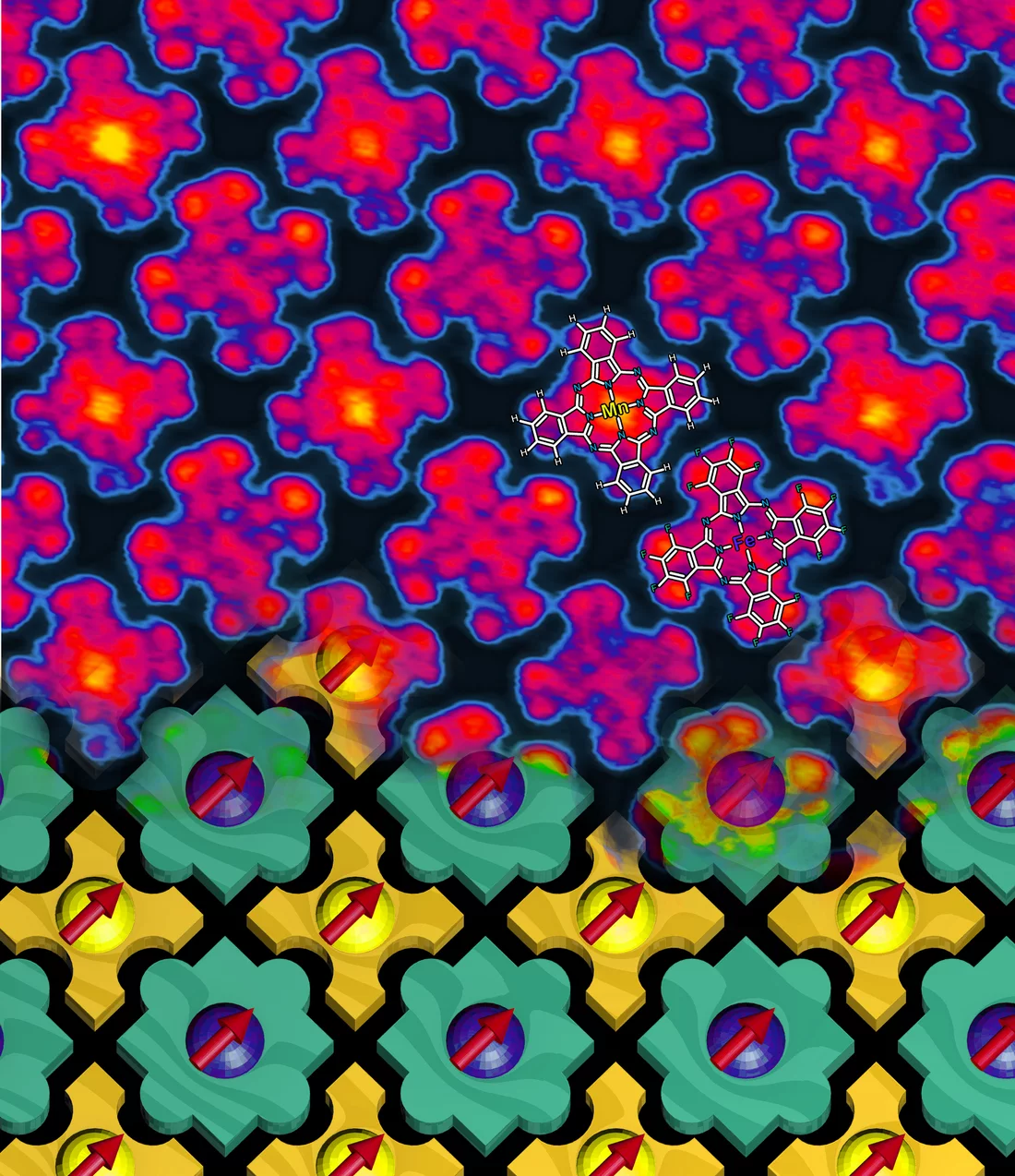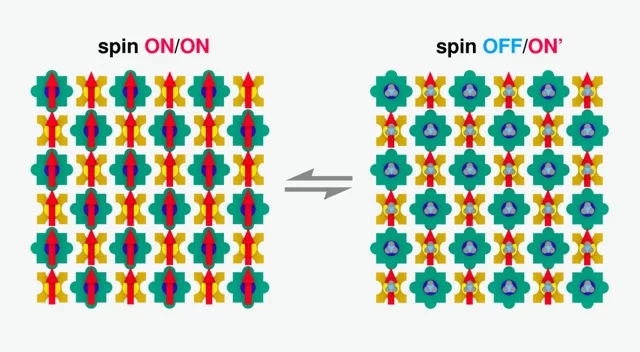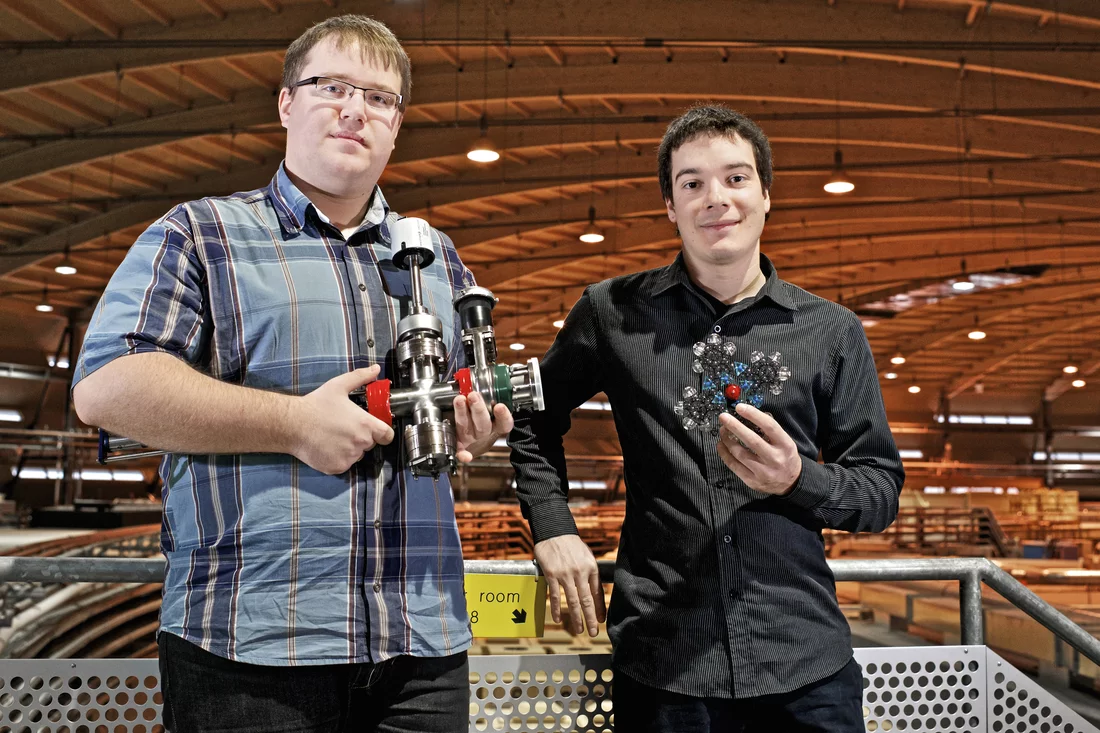Researchers switch the quantum properties of magnetic molecules
Researchers from the Paul Scherrer Institute and the Indian Institute of Science Education and Research (Pune, India) have managed to ‘turn off’ the magnetization of every second molecule in an array of magnetized molecules and thereby create a ‘magnetic chessboard’. The magnetic molecules were so constructed that they were able to find their places in the nano-chessboard by themselves. Thus the nano-chessboard effectively built itself together. The researchers were able to manipulate the quantum state of just a part of the molecules in a specific way. Being able to specifically alter the state of individual quantum objects is an important prerequisite for the development of quantum computers. Such computers would rely on the laws of quantum physics and could perform some calculational tasks very much faster than present-day computers. However, today we are very far from being able to build quantum computers that are in reality comparably powerful for particular calculations. The scientists have published their results in the journal Advanced Materials.
Researchers from the Paul Scherrer Institute and the Indian Institute of Science Education and Research (Pune, India) have produced a regular array of tiny magnets in a layer and were able to specifically ‘switch off’ alternate magnets – thereby manipulating their quantum states. This produced a ‘chessboard’ of nanometre dimensions whose fields had alternate magnetic properties, e.g. ‘magnetic’ and ‘non-magnetic’. Specifically, the researchers worked with flat organic molecules about 1 nanometre in size, with a single magnetic atom in the middle - of iron or manganese. This made the molecule into a tiny magnet that was significantly smaller than a magnetic bit in a computer hard disk, which is made up of more than a million of magnetic atoms. In order that the magnetic state of the molecules remained stable, they were vapour-deposited onto a magnetic cobalt surface. This cobalt surface then forced the molecules into a specific magnetic orientation.
As the molecules each contain only one magnetic atom, they are subject to the laws of quantum physics. The understanding of such quantum objects and how to manipulate them are prerequisites for the development of quantum computers, which will be able to perform some calculations significantly faster than present-day machines.
Magnetic nano-chessboard puts itself together
“Until now, it was extremely time-consuming to arrange magnetic atoms one by one. We have therefore built magnetic atoms into molecules and constructed these molecules such that they will arrange themselves into an alternate pattern on a surface, thereby creating a chessboard structure. This magnetic nano-chessboard can therefore put itself together on its own,” explains Christian Wäckerlin, a doctoral student at PSI.
Switching magnetism in a targeted way
“As we then exposed the molecules to gaseous ammonia, an ammonia molecule joined up with each of the metal atoms. Through this process, the iron atom associated with the ammonia became non-magnetic while the magnetisation of the manganese was only insignificantly altered. In this way, the quantum state of every alternate molecule in the nano-chessboard was changed from “magnetic” to “non-magnetic”. The nano-chessboard could be visualised using a scanning tunnel microscope and its magnetic properties studied with the light from the Swiss Light Source at PSI. If the whole system is warmed up a little, the ammonia molecules dissociate again and the original condition is regained,” Wäckerlin describes the process. An actual quantum computer is still naturally a long way off. In particular, the important coupling and entanglement of the quantum states is still missing. “We have, however, shown how the properties of very many atoms in a simple, highly organised system can be reproducibly switched.”
Other applications are also conceivable
More tangible are other applications: for example, the magnetic chessboard could be used as an ammonia sensor. Because not each, but only every other, molecule is magnetic after exposure to ammonia vapour, the way in which the ordering reacts to light also changes. This change can be demonstrated by using a really simple light source and, from this, it can therefore be seen that ammonia is present in the air.
About PSI
The Paul Scherrer Institute develops, builds and operates large, complex research facilities, and makes them available to the national and international research community. The Institute's own key research priorities are in the investigation of matter and material, energy and the environment; and human health. PSI is Switzerland's largest research institution, with 1500 members of staff and an annual budget of approximately 300 million CHF.
Contact
Christian Wäckerlin, Laboratory for Micro- und NanotechnologyPaul Scherrer Institute, 5232 Villigen PSI, Switzerland
Tel. +41 56 310 52 44, christian.waeckerlin@psi.ch
Prof. Dr. Thomas Jung, Laboratory for Micro- und Nanotechnology
Paul Scherrer Institut, 5232 Villigen PSI, Switzerland
Tel. +41 56 310 45 18, E-Mail: thomas.jung@psi.ch
Prof. Dr. Nirmalya Ballav, Department of Chemistry,
Indian Institute of Science Education and Research, 411 008 Pune, India
Tel: +91 20 2590 8215, E-mail: nballav@iiserpune.ac.in
Original Publication
Two-dimensional Supramolecular Electron Spin ArraysC. Wäckerlin, J. Nowakowski, S.-X. Liu, M. Jaggi, D. Siewert, J. Girovsky, A. Shchyrba, T. Hählen, A. Kleibert, P. M. Oppeneer, F. Nolting, S. Decurtins, T. A. Jung, N. Ballav
Advanced Materials 2013, Advance online publication 22. Januar 2013
DOI: 10.1002/adma.201204274



